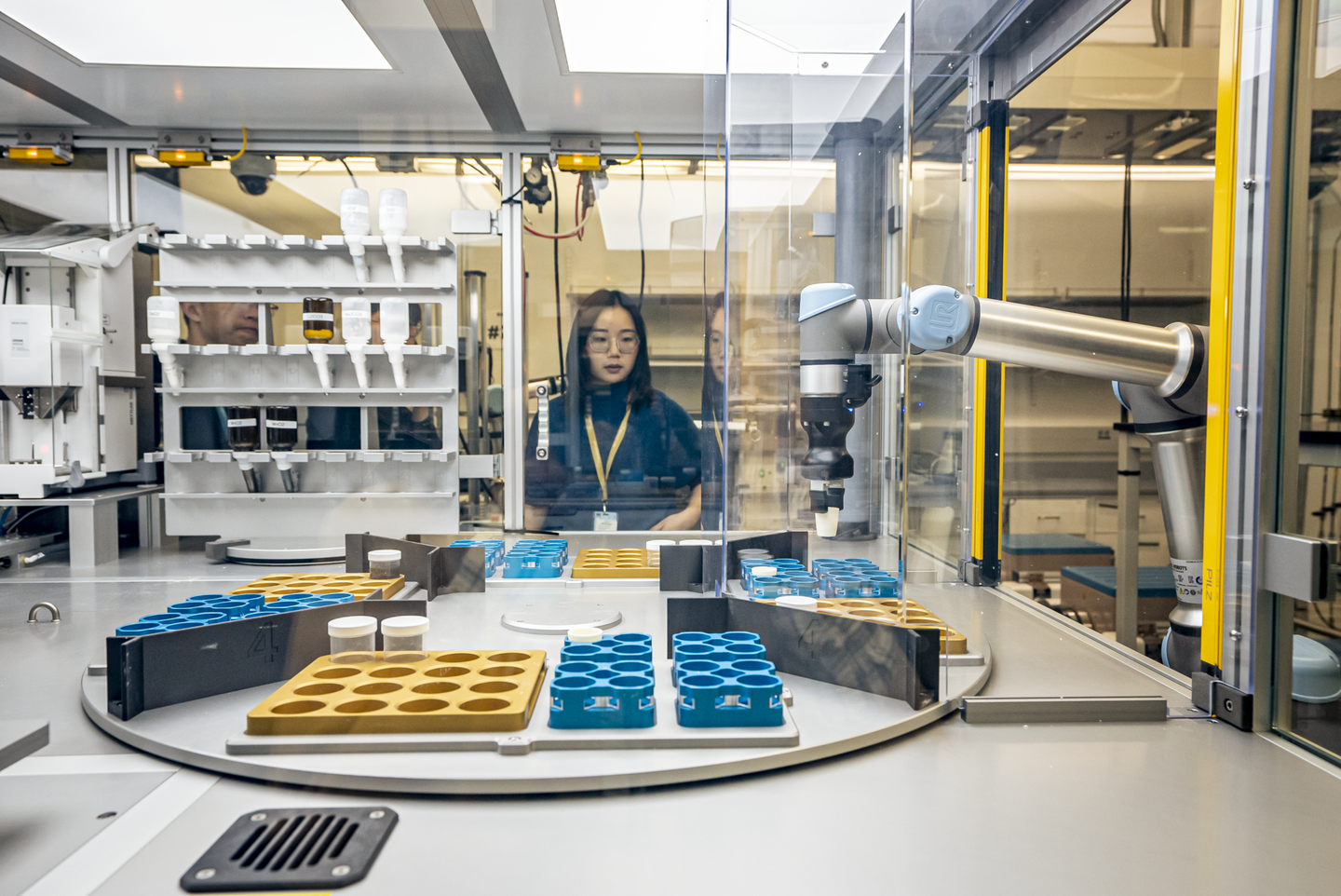Tony Stark would love this new experimental materials lab
It’s operated by robotic arms and AI, and it runs around the clock.

Lawrence Berkeley National Laboratory has recently announced the completion of its ‘A-Lab,’ where the ‘A’ stands for artificial intelligence, automated, and accelerated. The $2 million lab is complete with three robotic arms, eight furnaces, and lab equipment all controlled by AI software, and it works around the clock.
If it seems like a real-life replica of Marvel character Tony Stark’s lab, well, it’s not far off. It’s an entirely autonomous lab that can create and test up to 200 samples of new materials a day, accelerating materials science discoveries at an unprecedented rate and easing the workload off researchers.
Researchers at the A-lab are currently working on materials for improved batteries and energy storage devices, hoping to meet urgent needs for sustainable energy use. The lab could spur innovation in many other industries as well.
“Materials development, which is so important for society, is just too slow,” says Gerd Ceder, the principal investigator for A-Lab.
Materials science is a field that identifies, develops, and tests materials and their application for everything from aerospace to clean energy to medicine.
Materials scientists typically use computers to predict novel, not-seen-in-nature, materials that are stable enough to be used. Though a computer can generate theoretical inorganic compounds, identifying which novel compounds to make, figuring out how to synthesize them, and then evaluating their performance is a time-consuming process to do manually.
[Related: This tiny AI-powered robot is learning to explore the ocean on its own]
Additionally, computational tools have made designing materials virtually so much easier, which means that there is a surplus of novel materials that still need to be tested, creating a bottleneck effect.
“Sometimes you’re lucky and in two weeks of trying, you’ve made it and sometimes six months in the lab and you’re nowhere.” Ceder says. “So developing chemical synthesis routes to actually make that compound that you would like to get so much can be extremely time consuming.”
A-Lab works with The Materials Project, a database of hundreds of thousands predicted materials, run by founding director Kristin Persson. They provide free access to thousands of computationally predicted novel materials, together with information on the compounds’ structures and some of their chemical properties, that researchers can use.
“In order to actually design new materials, we can’t just predict them in the computer,” Persson says. “We have to show that this is real.”
Experienced researchers can only vet a handful of samples in a working day. A-Lab would in theory be able to produce hundreds of samples quickly, more accurately. With the help of A-Lab, researchers can allocate more of their time to big-picture projects instead of doing grunt work.
Yan Zeng, a staff scientist leading the A-lab, compares the lab’s process to cooking a new dish, where the lab is given a new dish, which in this case is the target compound, to find a recipe for. Once researchers identify a novel compound with the required qualities, they send it to the lab. The AI system creates new recipes with various combinations of over 200 ingredients, or precursor powders like metal oxides containing iron, copper, manganese, and nickel.
The robot arms mix the slurry of powders together with a solvent, and then bake the new sample in furnaces to stimulate a chemical reaction that may or may not yield the intended compound. Following trial and error, the AI system can then learn and tweak the recipe until it creates a successful compound.
[Related: A simple guide to the expansive world of artificial intelligence]
AI software controls the movement of three robotic arms that work with lab equipment, and weigh and mix different combinations of starting ingredients. And the lab itself is also autonomous. That means it can make new decisions about what to do following failures, independently working through new synthesis recipes faster than a human can.
“I had not expected that it would do so well on the synthesis of novel compounds,” Ceder says. “And that was kind of the maiden voyage.”
The speed bump from human scientists is not only due to the AI-controlled robots, but because the software can draw knowledge from around 100,000 synthesis recipes across five million research papers.
Like a human scientist, A-lab also records details from every experiment, even documenting the failures.
Researchers do not publish data from failed experiments for many reasons, including limited time and funding, lack of public interest, and the perception that failure is less informative than success. However, failed experiments do have a valuable place in research. They rule out false hypotheses and unsuccessful approaches. With easy access to data from hundreds of failed samples created each day, they can better understand what works, and what does not.